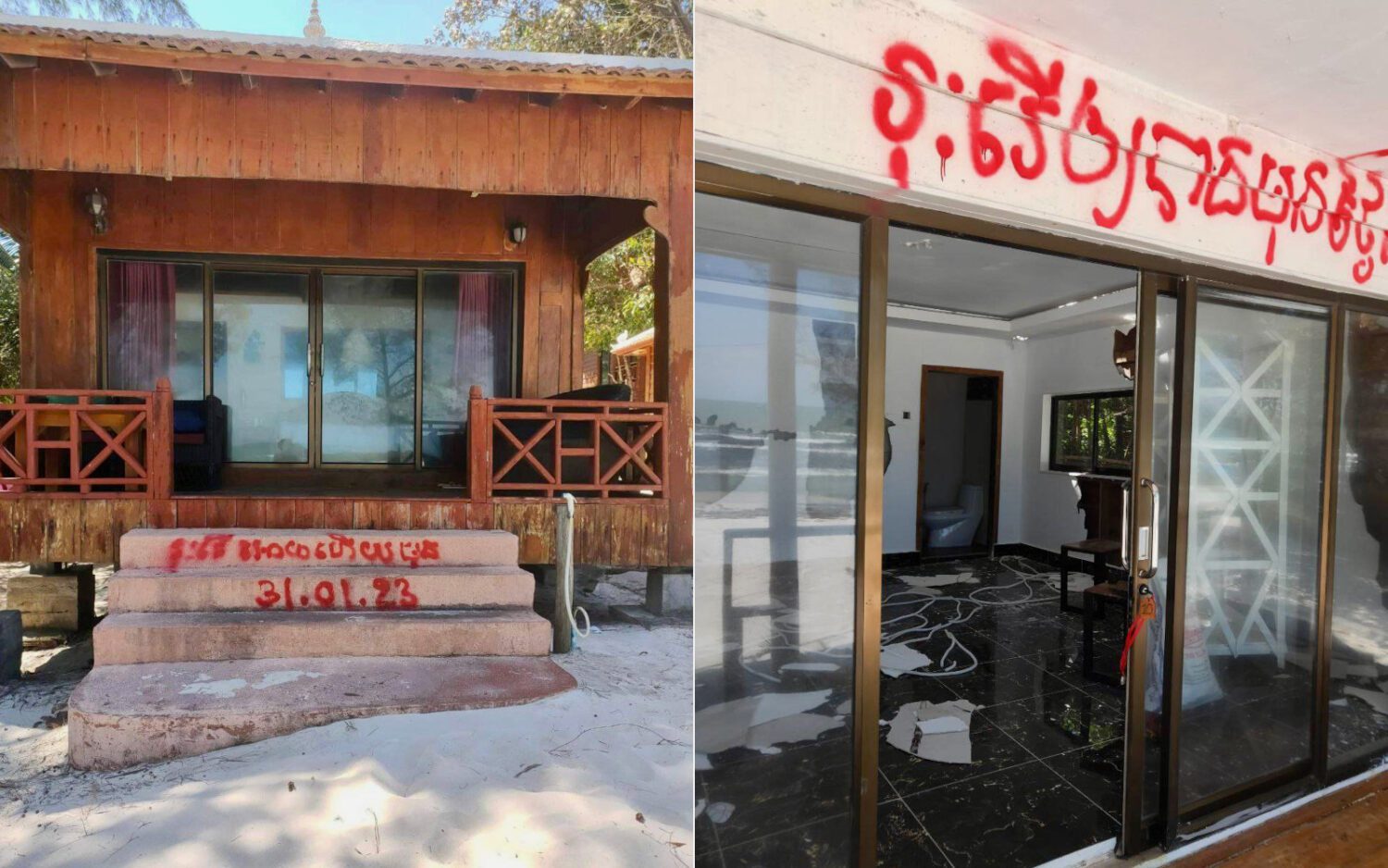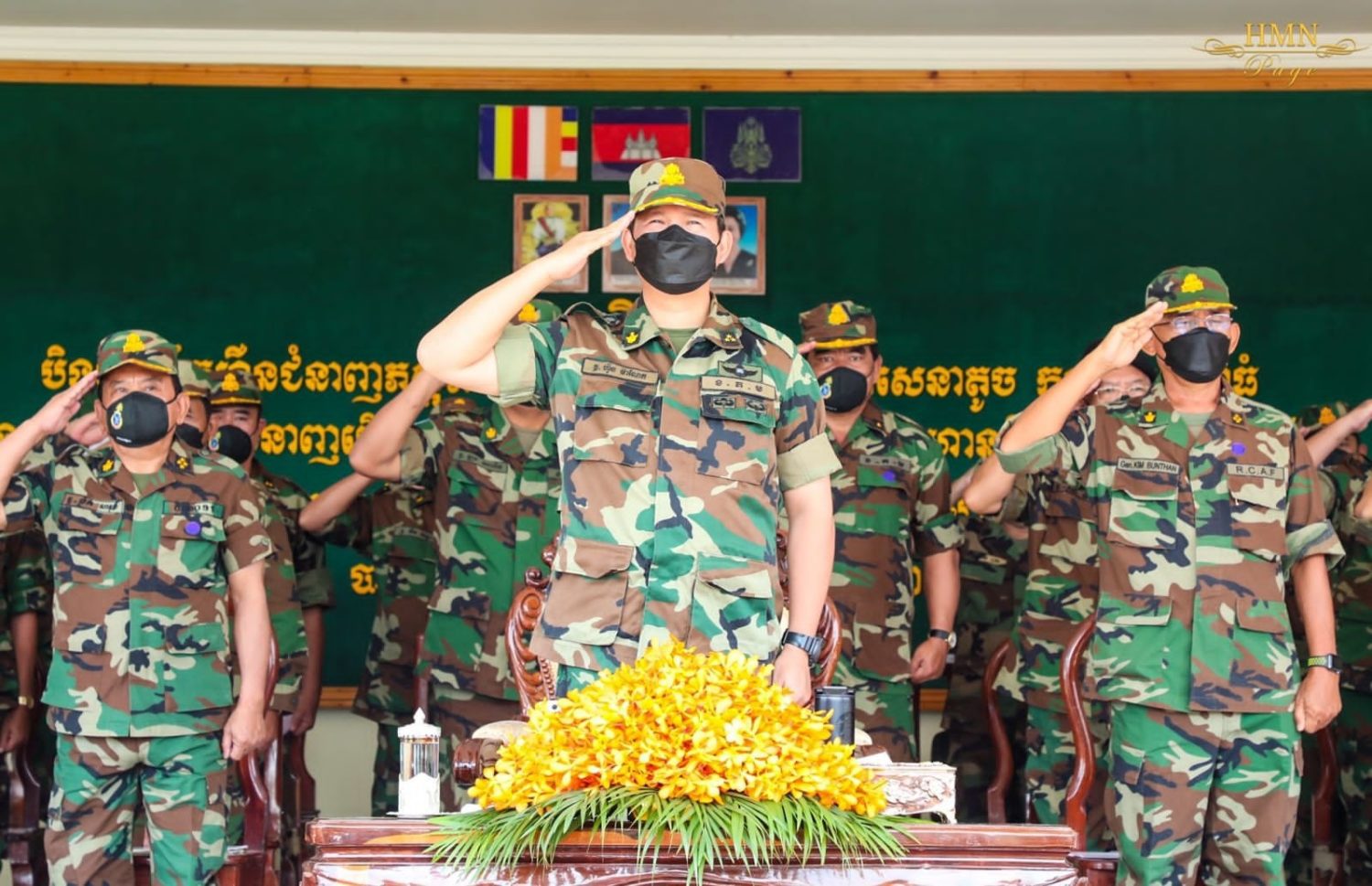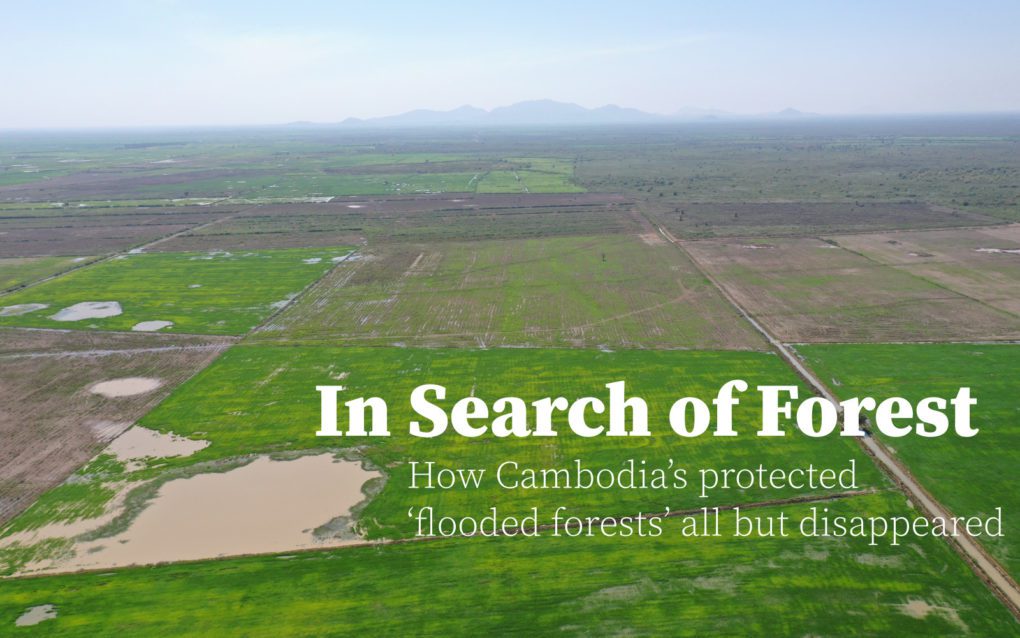
By Andrew Haffner and Mao Sreypich
KAMPONG CHHNANG — Long Sokha was technically farming in a flooded forest, but there was no hint of that on a recent, sun-soaked afternoon.
The fields of the plot in Kampong Leng district of Kampong Chhnang province looked neat and orderly, planted with rows of rice plants soaking in the paddy. The roughly 2,000 hectare stretch, not far from the Tonle Sap lake, was bare of any substantial trees, and though parts of the area appeared to be uncultivated wetlands, the area mostly looked like any other productive agricultural area in Cambodia. There was only one issue with that — none of these farms were supposed to exist.
The land Sokha farmed is part of a protected state-managed area bordering the Tonle Sap, the great lake of Cambodia that stands as a critical hub for both biodiversity and commercial fishing. In December, Prime Minister Hun Sen launched a campaign to reclaim protected lakeside areas such as those rented by Sokha, calling for all flooded forestlands to be handed back over to the state.
But even as levels of encroachment pushed the government to act, the flooded forest landscape had already been changed by generations of deforestation, a trend most dramatically punctuated by massive wildfires in 2016. Opportunist land-grabbing, often led by officials, has only accelerated since the fires burned out.
Now, as the national Anti-Corruption Unit investigates public officials for their roles in land-grabbing, residents, officials and conservationists alike are waiting to see what comes next for management of the protected areas across the five provinces that border the Tonle Sap.
Smallholder farmers such as Sokha are especially invested in that.
As she sat in the shade of a small shelter raised above a section of flooded rice fields, Sokha said farmers “understand that [Hun Sen] did the right thing” in calling for a reversal of encroachment. But at the same time, she said renters are ultimately the ones left with a loss.
“The victim is the farmer,” she said. “The landowner, he has already received half the money from the people, and how he bought the land before, it was his business. The farmers are at a big risk. Whenever I talk about this, I want to cry, I cannot speak. If they allow us to sow on the land where we have already paid, we won’t face a huge loss.”
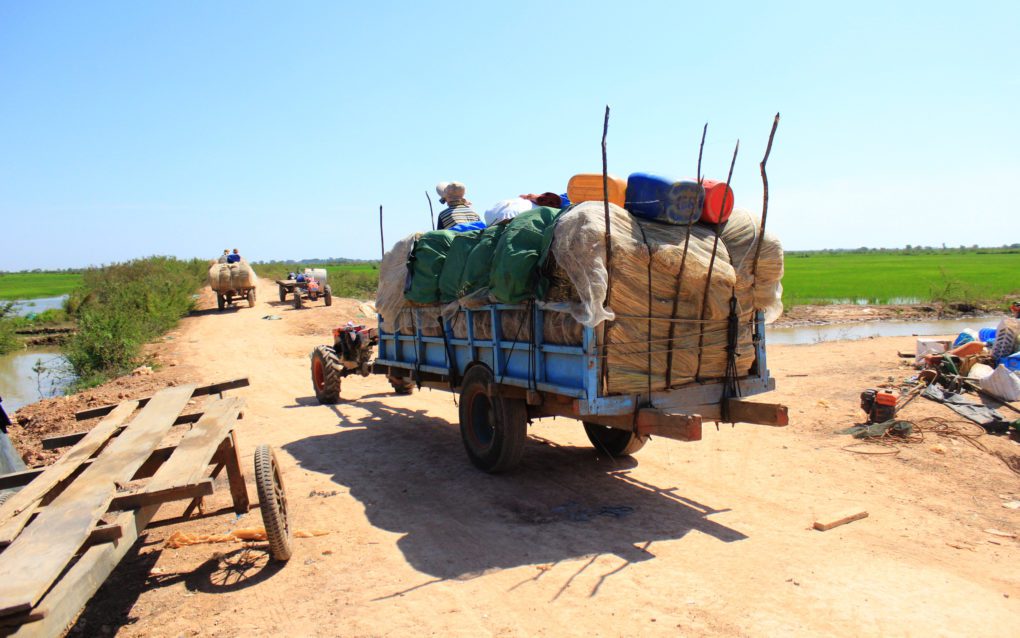
The 2,000-hectare stretch where Sokha had her plot was allegedly grabbed by former Kampong Chhnang provincial governor Chhour Chandoeun, who is now the undersecretary of state at the Rural Development Ministry. Though Chandoeun has repeatedly denied any role in encroaching on state land, representatives of a local fishing community who met with VOD reporters said it was open knowledge the former governor and other provincial officials had divided the 2,000-hectare-plot amongst themselves. Two police officials have also been arrested in Kampong Chhnang over allegedly grabbing forest land.
The apparent willingness to investigate and imprison public officials underlines the government’s show of urgency in addressing the land issues around the lake.
Within hours of Hun Sen’s diktat, hundreds of military police officers, some armed with rifles, swarmed across the flooded forests reclaiming land from provinces surrounding the Tonle Sap. Photos posted to social media show officers seated in boats pointing at trees and removing posts demarcating plots.
Tan Tab, a deputy of the fishing community, said encroachment in that area had begun in 2016 and had been actively cleared of its forest by crews of laborers with trucks.
According to Tab, the plot had been divided mostly between provincial officials, with Chandoeun the most prominent but also a range of provincial officials including both the arrested police officials. Tab also alleged Kampong Chhnang provincial court officials had been holding 600 hectares of land on the site.
“All of these lands belong to powerful officials, as the residents don’t hold it. Even if they own it, it is just a small amount, and it was confiscated. Almost all of the authorities, from the provincial level, have flooded forest land,” Tab said.
He said he had heard of a local plan to replant trees in the area, though on a recent field visit by VOD reporters, there was no sign yet of a visible replanting effort.
The plot, near the provincial border with Kampong Thom, is just one piece of a much larger pattern, according to a joint commission of ministerial offices tasked with investigating land encroachment along the lake.
That inquiry has so far identified about 30,000 hectares of state-owned forestland that had been taken over by private residents. Satellite imagery has also shown major tree loss beginning around 2019. But tree cover on large portions of the grabbed land may have already been long lost.
The Tonle Sap and its flooded forest zone were initially to be protected as a multi-use area through royal decree in 1993 as part of a group of 23 protected areas covering 3.3 million hectares to be overseen by the Ministry of Environment. Four years later, in 1997, Unesco declared the lake area an officially recognized biosphere reserve.
Despite that, researchers studying forest loss from 1993-2017 wrote that although the large majority of the Tonle Sap’s forests could be deemed flooded, the area as a whole had only about 26 percent forest cover — lower even than what researchers estimated for the country as a whole at 46 percent. It had lost around 35 percent during the 25-year period, they said.
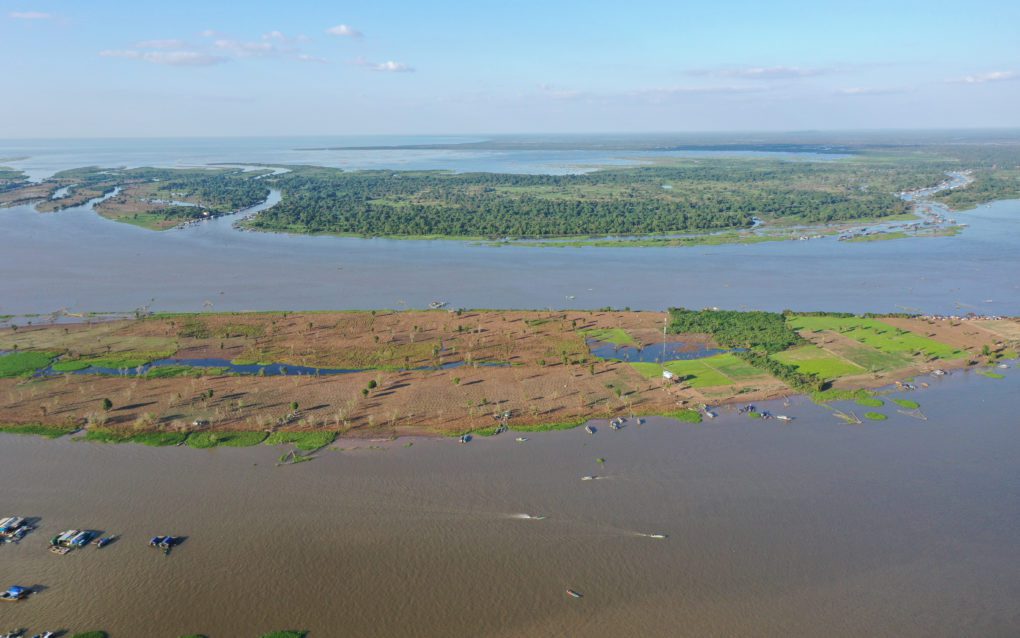
Massive wildfires that raged through the area in 2016 contributed to a significant loss of Tonle Sap forest, but the researchers also found evidence of steady and consistent forest loss over the past 25 years. They published those findings in the scientific journal Water.
“Tonle Sap may have the greatest legacy of past deforestation,” compared to the country as a whole and forests around northeastern river systems, the researchers wrote. They pointed to land clearing first overseen by French colonial administrators as they granted agricultural concessions around the lake.
Long after the French colonists had left Cambodia, the Khmer Rouge regime fostered the use of slash and burn agriculture along the great lake, further depleting the flooded forests. And even after the fall of the Pol Pot regime, the Vietnamese military subsequently encouraged the destruction of the forests to flush out Khmer Rouge insurgents.
“About one half of the flooded forest were thought to have been lost by 1993. Hence, modern flooded forest loss continues amidst a historic backdrop of deforestation,” the researchers noted in their report.
Earlier research reached similar conclusions, with another estimate stating 50 percent of the flooded forest had been cleared between 1980 and 1998. Either way, by the turn of the century, much of what was still referred to as flooded forest may have looked more like flooded savannah — grasslands filled with shrubs and the occasional taller trees rising over the landscape.
However, even with that extensive legacy of clearing, the wildfires of 2016 appeared to be a pivotal moment for the flooded forests, both for the health of the ecosystem but also in how it was considered by neighboring humans.
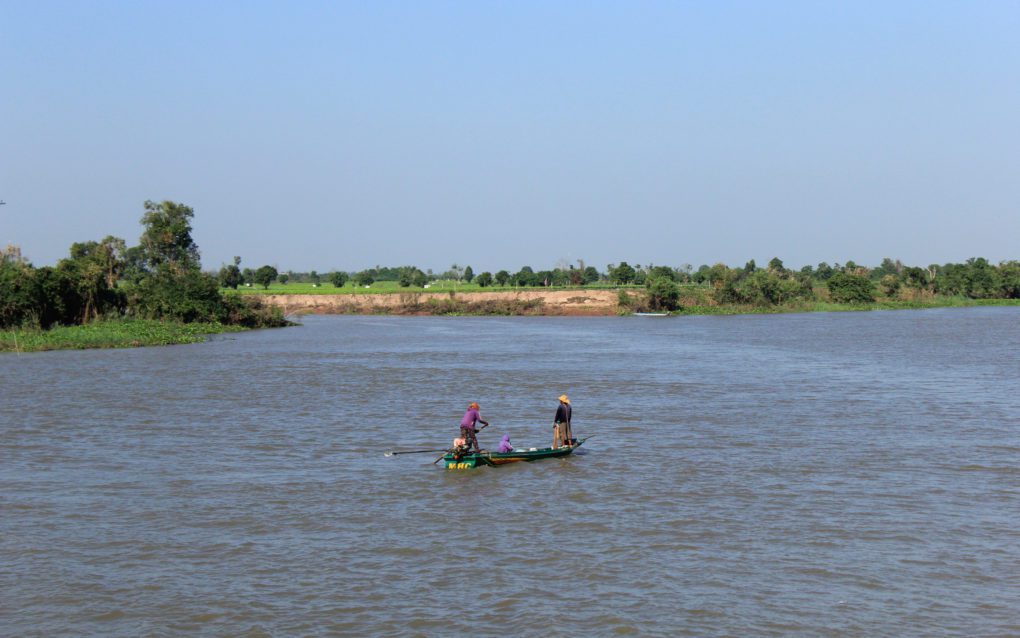
Rob Tizard, a senior project lead for Wildlife Conservation Society Cambodia overseeing projects on the lake, said the fires were a sudden reminder that climate change had come to the Tonle Sap. The clear vulnerability of the area to fire threats also changed the calculus of how protected areas should be managed.
“Since then, there seems to be a mix, I’ve found, of ‘We have to protect it and save everything with better management,’ or ‘All of this is going to burn down and disappear anyway, so let’s make money now,’” Tizard said. “Those have been the two basic approaches to the system.”
Even with that, he said it was unclear why encroachment into formally protected areas had taken off to the extent that it did in the years since.
Tizard said that land-grabbing had largely followed roads, with the most-popular spots between roadways and the lake. But even with climate change and upstream damming in the Mekong River reducing the seasonal flooding of the Tonle Sap, the conservationist said the lake still inundated its usual area — effectively rendering much of the encroached land a poor investment for development, at least for the foreseeable future.
Looking forward, he said management of the protected areas seems likely to center on their role as a hatchery for natural fisheries due to a “huge push” from the corresponding administration of the Ministry of Agriculture.
“[Hun Sen’s approach] much more clearly tries to capture the fish habitat part of flooded forests, so increasingly, that’s what he’s been pushing developers out of that system and trying to secure it, protect it as much as possible,” Tizard said.
“There seems to be an interest from all the provinces saying they’re going to replant, set up nurseries and whatnot, but classically, that’s a bit of a scam. It’s easier to show a nursery with a handful of plants, but much harder to actually grow trees that grow up to be tall.”
Additional reporting by Khan Leakhena









